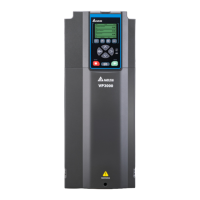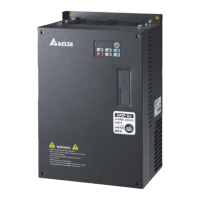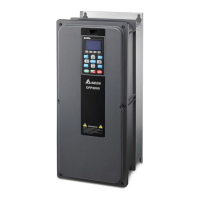Chapter 10 Accessories | VP3000
660
VP3000 AC Input Reactor Specifications
The following table is the recommended specifications for the Delta VP3000 AC input reactors:
380–460V, 50/ 60 Hz Normal Duty
AC Output Reactor
When using drives in long wiring output application, ground fault (GFF), over-current (OC) and motor
over-voltage (OV) often occur. GFF and OC cause errors due to the drive’s self-protective
mechanism; over-voltage damages motor insulation.
The excessive length of the output wires makes the grounded stray capacitance too large, increase
the three-phase output common mode current, and the reflected wave of the long wires makes the
motor dv / dt and the motor terminal voltage too high. Thus, installing a reactor on the drive’s output
side can increase the high-frequency impedance to reduce the dv / dt and terminal voltage to protect
the motor.
Installation
Installing an AC output reactor in series between the three output phases U V W and the motor, as
shown in the figure below:
Figure 10-42

